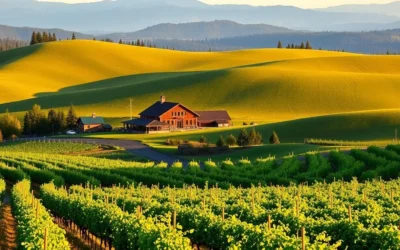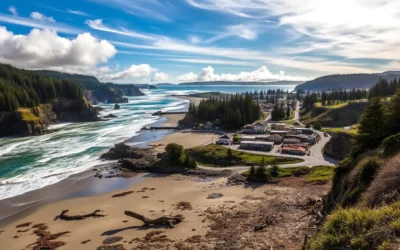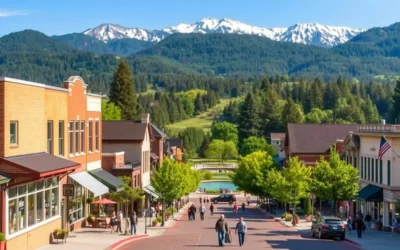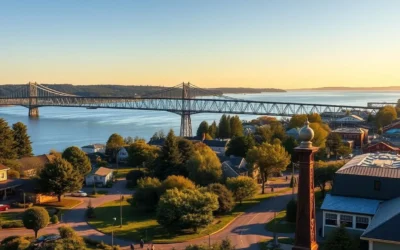Did you know that the Willamette Valley is a year-round destination, with each season offering a unique charm? From the fresh blooms of spring to the cozy magic of winter, this Oregon region is a treasure trove of experiences.
Understanding the weather patterns is crucial to making the most of your trip. The Mediterranean climate influences the valley’s attractions and activities throughout the year, making some times more suitable for certain pursuits than others.
Whether you’re interested in wine tasting, outdoor adventures, or cultural experiences, this guide will help you determine the best time to visit based on your preferences.
Understanding the Willamette Valley’s Mediterranean Climate
The Willamette Valley boasts a Mediterranean climate that attracts wine lovers worldwide. This climate is characterized by warm, dry summers and mild, wet winters, creating ideal conditions for vineyards and making the region a premier destination for wine enthusiasts.
Pacific Northwest Weather Patterns
The Pacific Northwest is known for its unique weather patterns, influenced by the Pacific Ocean and the region’s topography. The Willamette Valley benefits from this, experiencing a climate that’s generally mild and conducive to agriculture. The region’s weather is marked by significant seasonal variations, with warm months from June through September being the best time to visit for wine enthusiasts.
The Valley’s Unique Microclimate
The Willamette Valley’s microclimate is particularly suited for growing Pinot Noir grapes, making it world-renowned for this varietal. The long growing season allows for the slow, even ripening of grapes, producing wines with complex flavors and balanced acidity. Elevation changes throughout the valley create various microclimates, affecting both agriculture and visitor experiences.
| Season | Weather Characteristics | Ideal For |
|---|---|---|
| Summer | Warm, dry | Wine tours, outdoor activities |
| Winter | Mild, wet | Cozy retreats, holiday events |
| Spring | Mild, blossoming flora | Cherry blossoms, vibrant colors |
| Fall | Cool, harvest season | Harvest experiences, autumn foliage |
Understanding the valley’s microclimate helps explain why certain months offer optimal conditions for different activities, making it a versatile destination throughout the year.
Willamette Valley, Oregon: Best Months for a Weather-Savvy Trip
For a weather-savvy trip to the Willamette Valley, identifying the best months to visit is essential for a memorable experience. The region’s Mediterranean climate means that the weather varies significantly across the seasons, impacting the activities and experiences available to you.
Summer: Peak Season Benefits
Summer, from June to September, is the peak tourist season in the Willamette Valley. Warm weather and long days make it ideal for outdoor activities like hiking, biking, and wine tours. During this time, you can enjoy the valley’s festivals and events, such as outdoor concerts and wine tastings. However, it’s also the busiest time of the year, so you can expect larger crowds and higher prices.

Shoulder Seasons: Spring and Fall Advantages
The shoulder seasons, which include late spring (May-June) and early fall (September), offer a great balance between pleasant weather and fewer crowds. During these periods, you can enjoy mild temperatures and a range of activities. In the spring, the orchards are in bloom, and vineyards are awakening, creating picturesque landscapes. In the fall, the harvest season brings wine tastings and vineyard tours, along with stunning foliage.
| Season | Weather | Activities |
|---|---|---|
| Spring (May-June) | Mild temperatures, fewer rainy days | Blooming orchards, vineyard tours |
| Summer (June-September) | Warm weather, long days | Outdoor festivals, hiking, biking |
| Fall (September) | Comfortable temperatures, harvest season | Wine tastings, vineyard tours, foliage |
Summer in the Willamette Valley: Warm Weather and Wine Tours
As summer descends upon the Willamette Valley, the region transforms into a vibrant hub of activity. The warm weather and long days create an ideal setting for exploring the valley’s renowned wineries, attending outdoor festivals, and enjoying various outdoor adventures.
Temperature and Rainfall Expectations
During the summer months, the Willamette Valley experiences warm temperatures, with average highs often reaching the mid-80s to low 90s Fahrenheit. Rainfall is scarce during this period, making it an ideal time for outdoor activities like hiking and biking. You can expect plenty of sunshine, with most days being dry and pleasant.
Summer Festivals and Outdoor Activities
Summer is a peak season for festivals and outdoor events in the Willamette Valley. You can enjoy wine festivals like the International Pinot Noir Celebration, which attracts wine enthusiasts from around the world. The valley also hosts various outdoor concerts and live music events, offering entertainment against the backdrop of stunning vineyard views. Some other activities to enjoy include:
- Visiting farmers markets to sample local berries, peaches, and farm-fresh produce
- Embarking on hiking and biking trails that wind through the picturesque landscape
- Taking a wine tour to explore the region’s famous wineries and vineyards
- Enjoying live music and outdoor concerts in a scenic setting
Spring in the Valley: Cherry Blossoms and Vibrant Colors
The Willamette Valley in spring is a treat for the senses, with blooming flowers and lush greenery everywhere. As the weather warms up, the landscape transforms into a colorful tapestry, making it an ideal time to explore the outdoors.
March to May Weather Conditions
From March to May, the Willamette Valley experiences mild temperatures, with average highs ranging from 58°F to 73°F. While some rainfall is expected, the precipitation decreases as spring progresses, allowing for plenty of sunshine and dry days to enjoy the outdoors. It’s an excellent time for outdoor adventures, such as hiking and biking, as the trails are generally in great condition.
Spring Outdoor Activities and Attractions
Spring is a great time to explore the Willamette Valley’s natural beauty. You can visit spectacular flower festivals like the Wooden Shoe Tulip Festival in Woodburn, where fields of colorful tulips create stunning photo opportunities. The valley’s botanical gardens, such as the Oregon Garden in Silverton, are also worth visiting, featuring over 20 specialty gardens. Additionally, hiking trails like Marys Peak are lush and green this time of year, making them perfect for a hike. Don’t miss the chance to visit Silver Falls State Park, where you can see seven waterfalls in full flow.
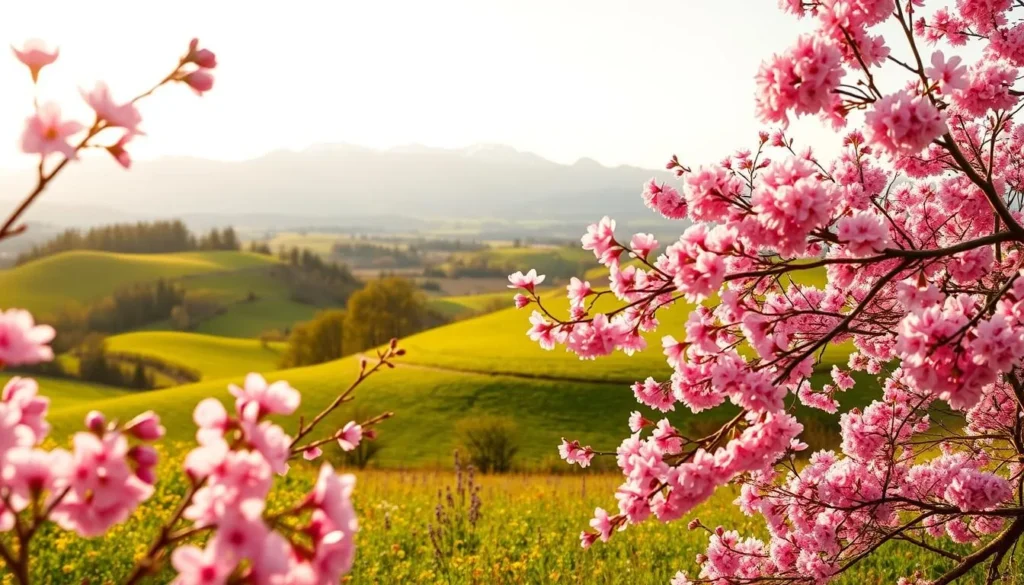
Fall in Wine Country: Harvest Season and Autumn Foliage
The Willamette Valley’s fall season is characterized by mild temperatures, harvest festivals, and an array of wine-related activities. As the seasons change, the region transforms into a picturesque landscape, making it an ideal time to visit.
September to November Weather Overview
From September to November, the Willamette Valley experiences a gradual cooling of temperatures, with average highs ranging from the mid-70s to mid-60s Fahrenheit. This period is marked by a decrease in rainfall, making it an ideal time for outdoor activities such as scenic drives and hiking. The comfortable weather conditions allow visitors to fully immerse themselves in the harvest season experiences.
Vineyard Harvest Experiences and Fall Festivals
Fall is harvest season in the Willamette Valley, known for its world-class Pinot Noir. Visitors can experience the excitement of harvest festivals and crush events while sampling some of the best wines. Many wineries and vineyards offer special tours and tastings, giving insight into the winemaking process. Some of the activities include attending festivals like the Wine Country Thanksgiving event, enjoying farm-to-table dinners, and exploring the autumn foliage.
To make the most of your visit, consider participating in the various harvest-themed activities, such as grape harvesting and wine tastings. The valley’s fall foliage is also not to be missed, with the changing leaves creating a picturesque backdrop for your trip.
Winter in the Willamette Valley: Cozy Vibes and Holiday Charm
As the holiday season approaches, the Willamette Valley transforms into a winter wonderland, offering a unique blend of cozy vibes and festive charm. You can experience the region’s intimate atmosphere, with a variety of activities and attractions that make for a memorable visit.
December to February Weather Patterns
During the winter months, the Willamette Valley experiences mild temperatures, with average highs ranging from 47°F to 52°F. You can expect some rainfall, but the region’s lush landscapes remain vibrant, making it a great time to enjoy the outdoors. The cool weather also makes it an ideal time to explore indoor attractions, such as museums and art galleries.
Winter Activities and Indoor Attractions
Winter is a great time to indulge in the valley’s cozy indoor activities. You can sip wine by the fire at one of the many wineries, which often feature special winter releases and a more personal experience. The valley is also home to numerous holiday markets, showcasing local artisans and craftspeople. Additionally, towns like Corvallis, Albany, and McMinnville display impressive light displays, adding to the festive atmosphere. You can also explore the region’s indoor attractions, including craft breweries and restaurants offering special winter menus.
- Enjoy fireside wine tastings at wineries with special winter releases.
- Browse local holiday markets for unique gifts and souvenirs.
- Take in the festive light displays in towns throughout the valley.
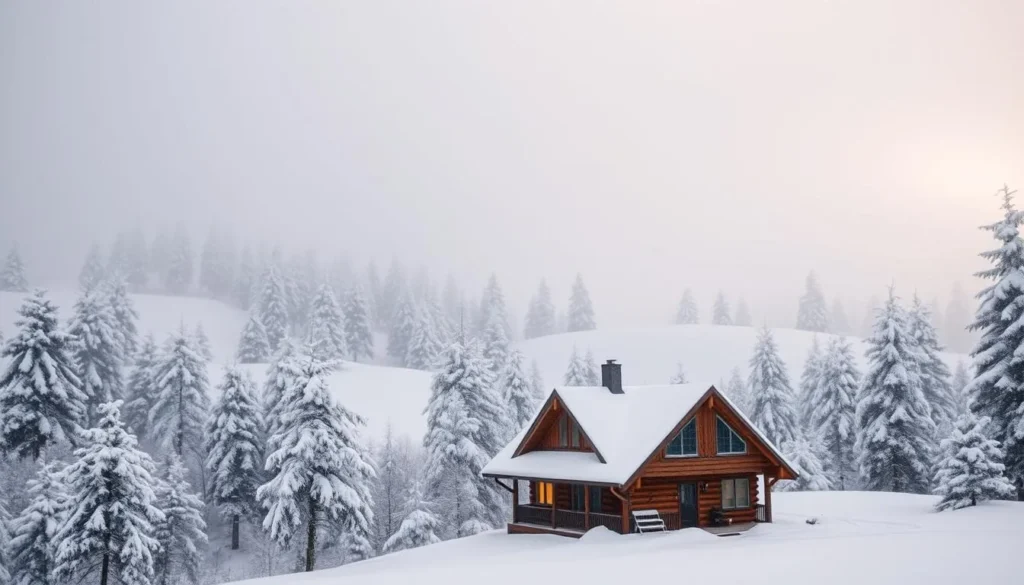
Wine Tasting Through the Seasons
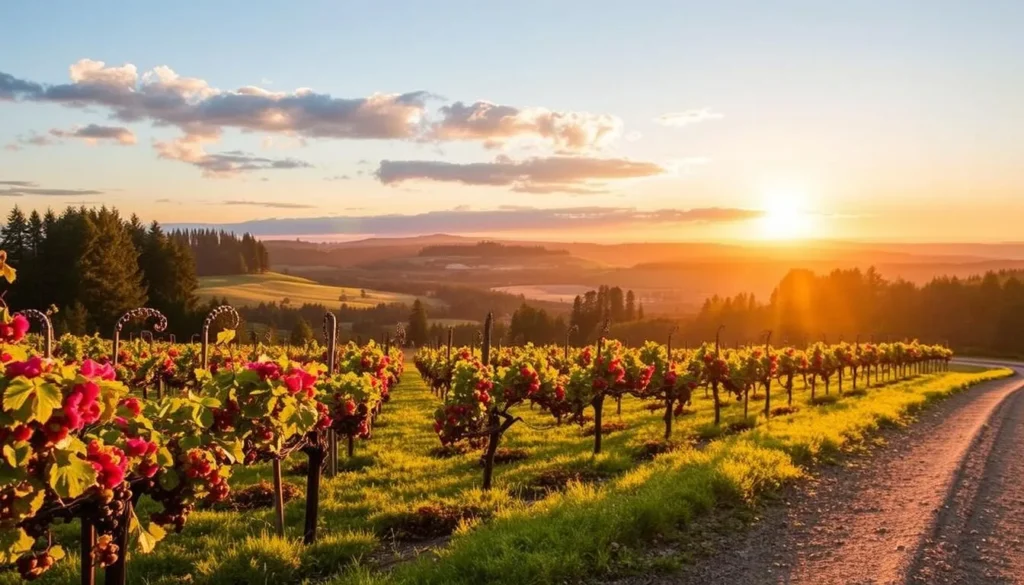
Discover the flavors of Willamette Valley through its renowned wine tastings, influenced by the changing seasons. The valley is particularly famous for its Pinot Noir, a grape variety highly sensitive to weather conditions.
Prime Seasons for Vineyard Tours
The best time to visit Willamette Valley wineries is during the spring and fall. In the spring, the vineyards are lush and green, while in the fall, the harvest season brings a unique excitement. Visitors can experience the excitement of crush events and harvest festivals while sampling some of the best wines.
Wine Harvest Season Weather Considerations
During the harvest season, typically from mid-September through October, the weather becomes more variable with occasional rain showers. Early fall generally brings ideal harvest conditions with warm days and cool nights, allowing grapes to reach optimal ripeness. However, rain can become a concern as the season progresses, potentially affecting harvest schedules.
Outdoor Adventures: Weather-Based Planning
Experience the best of the Willamette Valley through its numerous outdoor adventures, tailored to suit every season. The region’s diverse landscape and climate offer a wide range of activities that cater to different weather conditions, ensuring that there’s always something to enjoy.
Best Weather Windows for Hiking and Biking
Summer is the best time to hit the trails in the Willamette Valley, with warm weather and dry conditions making it ideal for hiking and mountain biking. Check out AllTrails for up-to-date information on trail conditions and user reviews. Popular destinations include Silver Falls State Park and Mary’s Peak, offering hundreds of miles of trails to explore.
Seasonal Outdoor Activities in the Valley
The Willamette Valley offers a diverse range of seasonal outdoor activities that align with the region’s changing weather patterns. In the spring, enjoy wildflower hikes and waterfall viewing, while summer is perfect for water activities like kayaking and paddleboarding on the Willamette River. Fall brings harvest-related activities like apple picking and pumpkin patches, and winter provides opportunities for nearby snow sports in the Cascade Mountains.
| Season | Outdoor Activities |
|---|---|
| Spring | Wildflower hikes, waterfall viewing |
| Summer | Kayaking, paddleboarding, hiking, biking |
| Fall | Apple picking, pumpkin patches, harvest activities |
| Winter | Snow sports, skiing, snowboarding |
Exploring the Columbia River Gorge: Seasonal Guide

As you plan your visit to the Columbia River Gorge, understanding the seasonal changes can enhance your experience. The Gorge is a dynamic destination, with each season offering unique landscapes and activities.
Waterfall Viewing: Optimal Seasons
The Columbia River Gorge is renowned for its stunning waterfalls, which are at their peak during the spring. The increased rainfall during this season ensures that the falls are at their most spectacular. Spring is the ideal time for waterfall viewing, with wildflowers blooming along the roadside, adding to the scenic beauty.
Scenic Drives and Hiking Conditions by Season
Scenic drives and hiking conditions in the Columbia River Gorge vary dramatically by season. Summer provides the most reliable conditions for hiking, with dry trails and clear views of the Columbia River. In contrast, fall transforms the Gorge into a colorful spectacle, with deciduous trees creating vibrant displays that typically peak in mid-October.
The seasonal changes offer different experiences throughout the year. You’ll find that summer is perfect for outdoor enthusiasts, while fall is ideal for scenic drives. Winter brings snow, creating dramatic landscapes, though some roads and trails may be temporarily closed.
Portland Day Trips: Weather Considerations
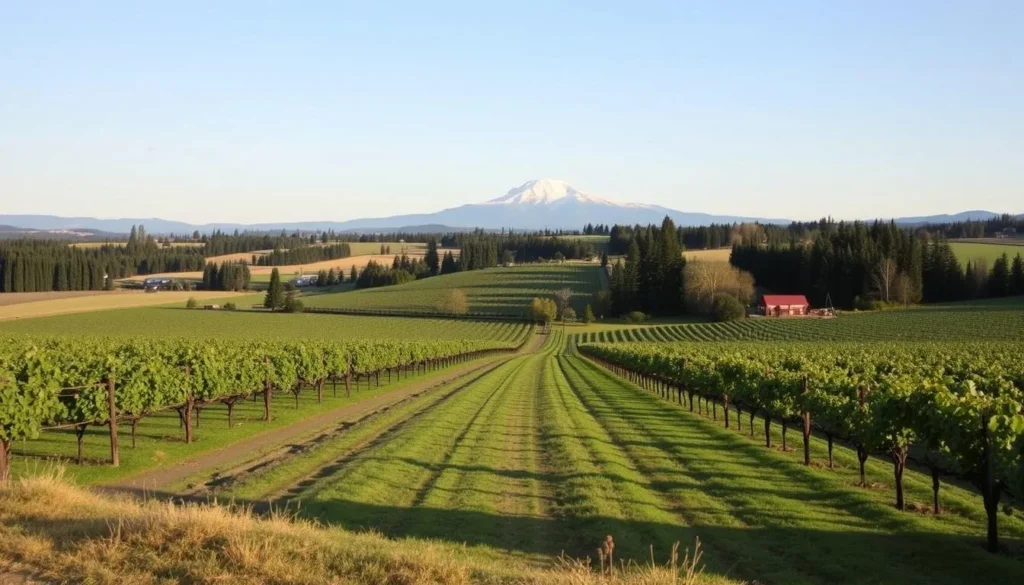
To make the most of your day trip from Portland to the Willamette Valley, consider the seasonal weather conditions. The valley’s climate varies significantly throughout the year, impacting the experience.
Combining City and Valley Experiences
A day trip to the Willamette Valley allows you to combine the urban charm of Portland with the natural beauty of the valley. In summer, the warm weather makes it ideal for wine tours and outdoor activities. You can enjoy the scenic views, visit vineyards, and explore the local culture.
Seasonal Transportation Tips
Transportation considerations for Willamette Valley day trips vary by season, with weather conditions affecting travel times and accessibility. Here are some key tips:
- Summer offers the most reliable driving conditions, with minimal concerns about weather-related delays.
- In winter, morning ice can affect bridges and rural roads, so plan accordingly.
- Rain can impact visibility year-round, but is most prevalent in winter months.
- Consider guided wine tours during winter months to eliminate driving concerns.
- Public transportation options are limited, making a rental car the most flexible option for day trips in any season.
By understanding the weather and planning your trip accordingly, you can have a more enjoyable and stress-free experience. Allow extra time for travel during the rainy season, and enjoy the scenic beauty of the Willamette Valley.
What to Pack: Seasonal Packing Guide
The Willamette Valley’s diverse climate means that packing the right gear is crucial for enjoying your visit. The region’s weather varies significantly across seasons, making it essential to prepare accordingly.
Summer Essentials
For summer visits, pack lightweight and breathable clothing to stay cool during warm days. Don’t forget to include sunscreen, sunglasses, and a hat for outdoor protection. Summer is a great time for outdoor activities, so consider packing a reusable water bottle and comfortable walking shoes.
Spring and Fall Layering Strategy
During spring and fall, the temperature can fluctuate significantly between morning and afternoon. A layering strategy is key, with a mix of lightweight and warmer layers to adjust to changing conditions. This approach ensures you’re prepared for both warm and cooler moments.
Winter Weather Gear
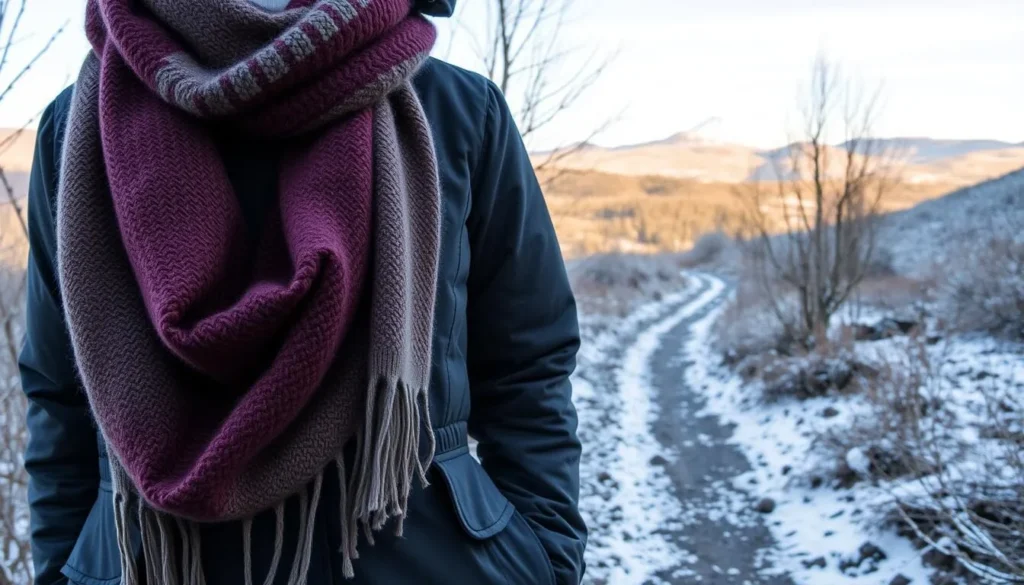
Winter in the Willamette Valley requires waterproof outerwear, warm layers, and waterproof footwear. Even though snow is rare, the rain and chill can make it feel quite cold. Gloves, hats, and scarves are recommended to stay warm during outdoor activities. Consider a travel umbrella that can withstand wind and rain.
Avoiding Weather Surprises: Month-by-Month Breakdown
To avoid weather surprises, it’s essential to grasp the monthly weather patterns in the Willamette Valley. This knowledge will help you plan your trip effectively and make the most of your visit.
Rainfall and Temperature Averages
The Willamette Valley experiences a Mediterranean climate, characterized by dry summers and wet winters. Understanding the average rainfall and temperature for each month can help you pack and plan accordingly.
| Month | Average High Temp | Average Rainfall |
|---|---|---|
| January | 47°F | 4.8 inches |
| July | 86°F | 0.6 inches |
| December | 46°F | 5.1 inches |
Weather Anomalies to Be Aware Of
While the Willamette Valley generally follows predictable seasonal patterns, certain weather anomalies can occur. Being aware of these can help you prepare for unexpected conditions.
- Summer Heat Waves: Temperatures can soar into the 90s or occasionally over 100°F, typically in July or August.
- Winter Ice Storms: Ice can be a concern on bridges and rural roads, particularly during morning hours after overnight freezing temperatures.
- Atmospheric Rivers: Heavy rainfall events can cause localized flooding, most commonly between November and February.
Conclusion
Whether you’re looking for warm summers or cozy winters, the Willamette Valley has something special to offer. This region is a year-round destination, with each season bringing its own unique charm. You can enjoy outdoor activities and wine tasting in the summer, or experience the beauty of spring with its cherry blossoms and wildflowers.
The valley’s Mediterranean climate means that spring and fall offer mild weather and fewer crowds, making them ideal for those who prefer a more relaxed pace. In the fall, you can enjoy harvest activities and vibrant foliage, while winter brings intimate wine tasting experiences and holiday festivities.
Understanding the seasonal patterns of the Willamette Valley helps you plan your trip according to your preferences. Whether you’re drawn to the valley for its world-class Pinot Noir, outdoor adventures, or scenic beauty, timing your visit to match your interests will ensure a memorable experience. The Willamette Valley’s diverse seasonal offerings make it a destination worth visiting again and again.
- Experience the best of Willamette Valley in every season.
- Enjoy warm summers and cozy winters in this charming region.

